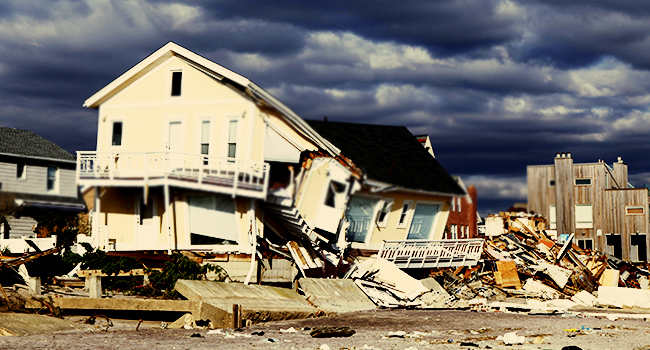
With the arrival of Hurricane Irma, the U.S. has experienced something unprecedented: Two major hurricanes, hitting the country back to back, after more than a decade of hurricanes missing the country altogether. Irma was bigger than the state of Ohio, and Harvey dropped as much rain on Houston in a few days as the city typically sees in a year. So why is this happening? Is climate change involved? Are Harvey and Irma the forebearers of our grim future?
First, we need to understand how hurricanes work. Think of a hurricane like an engine, powered by warm ocean water. A standard thunderstorm comes in, the “sparkplug” if you will, and begins drawing up the warm water, which in turn rises until it rises to a point cold enough that it condenses into rain and falls. If the conditions are right, namely the atmosphere allows water to rise easily, the winds are generally blowing in just one direction, and this storm forms over the right part of the ocean where the warm water isn’t swept away quickly, it will simply keep growing, forming a vortex as it’s steadily pushed along by the wind. A hurricane stalls out when the water cools enough that it won’t rise easily, or when it hits land.
That seems to be a direct connection between climate change and hurricanes. After all, if the Earth is warmer, the oceans are warmer. In fact, we know the oceans are warming; we’ve got the data to prove it. So, more fuel for the engine means more power, right? Well, perhaps.
Scientists are a careful lot, and the first thing a scientist will point out is that we’ve only been tracking hurricanes since 1851, and for much of the history of meteorology, our data has been spotty at best. A hurricane does not necessarily make landfall; in fact, until Harvey, not a single major hurricane made landfall in the US for more than a decade. So for all we know, hurricane formation is the same as it’s always been, and wind patterns have just shifted over time, or perhaps currents have changed.
That said, though, scientists are rather blunt that if climate change isn’t already making hurricanes more intense, it’s going to. The National Oceanic and Aeronautic Administration has said that while hurricanes are unlikely to become more frequent over time, and in fact they might even decrease in frequency slightly, their strength and thus potential to destroy is only increasing:
There are better than even odds that anthropogenic warming over the next century will lead to an increase in the occurrence of very intense tropical cyclone in some basins–an increase that would be substantially larger in percentage terms than the 2-11% increase in the average storm intensity. This increase in intense storm occurrence is projected despite a likely decrease (or little change) in the global numbers of all tropical cyclones.
It’s becoming an “all or nothing” proposition; the smaller storms stall out, but the bigger storms become more powerful. This is mostly theory, at this point, built on climate change models and, again, incomplete hurricane data. But there are larger problems; even if hurricanes stay the same, climate change will make their secondary effects worse. Take, for example, storm surge. When a hurricane suddenly and severely drives up sea levels, it’s often the most fatal aspect of a hurricane. It wasn’t the wind and rain of Katrina that killed 1,833 people; it was the severe flooding and the failure of infrastructure. As climate change raises sea levels, that will make the storm surge more intense. Climate change also kills coral reefs, which help protect coasts from storms.
And this is just what we know, so far. As the Earth warms, other effects may emerge. Data will shift. In short, we’re entering a new, uncertain era of extreme weather. And nobody quite knows how bad it’s going to be.






